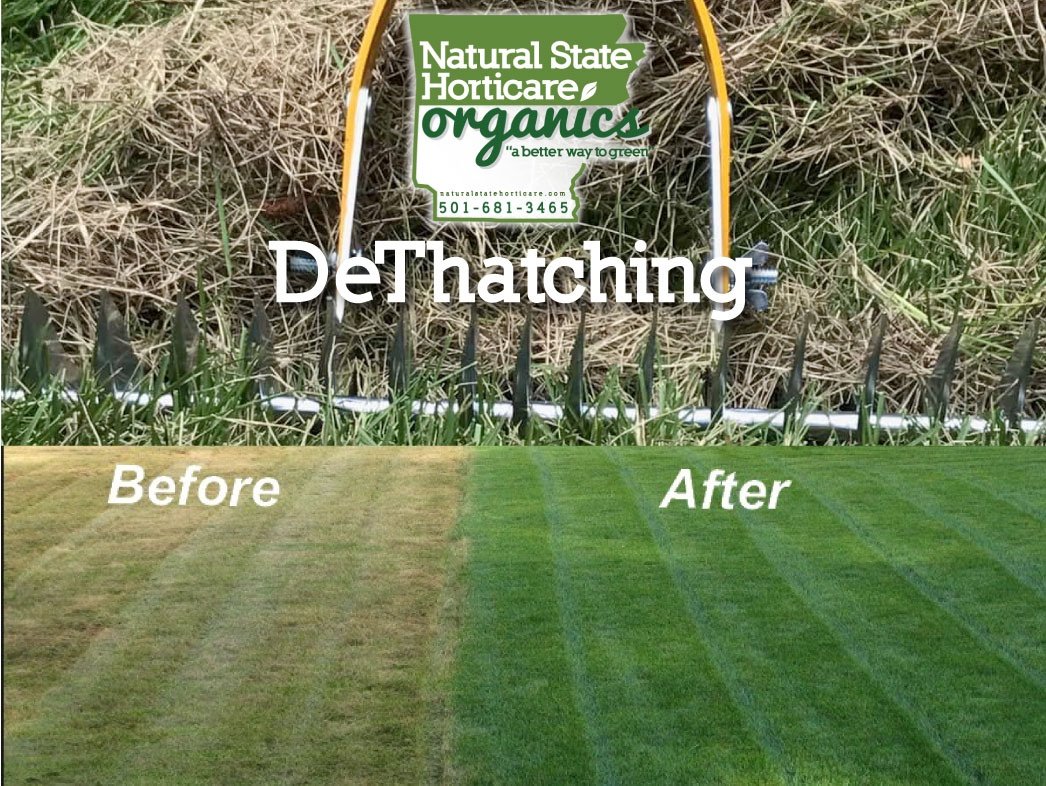Thatch



Understanding Thatch & Its Impact
🔎 What is Thatch?
Thatch is a layer of dead grass and decaying organic matter that accumulates at the soil level. In a healthy lawn, soil microorganisms break down this material, helping turf withstand temperature swings and foot traffic.
⚠️ When Does Thatch Become a Problem?
Excessive thatch traps moisture, creating a breeding ground for fungi, pests, and pathogens. It can also delay spring green-up by blocking new growth from emerging properly.
❓ Why Does My Lawn Have Excessive Thatch?
Overuse of traditional nitrogen fertilizers causes rapid top growth and overwhelming soil microorganisms.
Overgrown grass – Thick grass can slow natural thatch breakdown.
Excessive watering – Encourages buildup by limiting oxygen to the soil.
Lack of aeration – Prevents microorganisms from properly decomposing organic matter.
🌱 Are Grass Clippings Causing Thatch?
No! Grass clippings typically do not contribute to thatch. In fact, microorganisms break them down quickly, returning valuable nutrients to the soil.
Solutions for Thatch Build-Up
1️⃣ Dethatching
Light Thatch: Use a garden rake to gently remove thatch, minimizing stress for faster recovery.
Heavy Thatch: Requires a dethatching machine or vertical mower to pull thatch from the topsoil.
Timing: Perform dethatching after dormancy but before summer heat to prevent excessive stress on the grass.
2️⃣ Spring Low Mow ("Scalping") 🌱✂️
Lowers mowing height to remove dormant grass and encourage spring growth.
Bag clippings to prevent buildup.
✅ Best for: Bermuda & Zoysia
DO NOT scalp zoysia lower than 2.5 inches
❌ NOT recommended for: St. Augustine & Centipede
3️⃣ Core Aeration 💨
Improves air and moisture infiltration, boosting microorganism activity that naturally breaks down thatch.
Leave soil plugs on top—as they decompose, they return nutrients to the lawn.
Encourages stronger root growth and overall turf health.
💡 For long-term thatch management, regular aeration is highly recommended!

